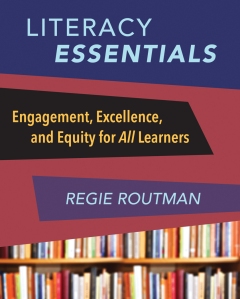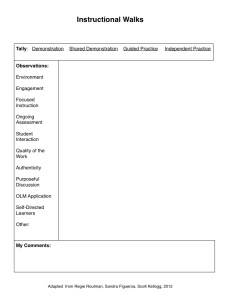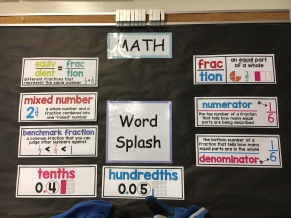 Thank you for joining us as a reader and a learner as we responded to Literacy Essentials: Engagement, Excellence, and Equity for All Learners by Regie Routman (Stenhouse, 2018). By all measures, this was a successful experience. Special thanks go to Stenhouse Publishers for providing copies of Regie’s book to our contributors. If you haven’t checked out the free curriculum, I recommend it for undergraduate coursework and for professional learning experiences around Literacy Essentials. Also, I believe I speak for all of our contributors in expressing our gratitude to Regie Routman for responding to each post during this book study.
Thank you for joining us as a reader and a learner as we responded to Literacy Essentials: Engagement, Excellence, and Equity for All Learners by Regie Routman (Stenhouse, 2018). By all measures, this was a successful experience. Special thanks go to Stenhouse Publishers for providing copies of Regie’s book to our contributors. If you haven’t checked out the free curriculum, I recommend it for undergraduate coursework and for professional learning experiences around Literacy Essentials. Also, I believe I speak for all of our contributors in expressing our gratitude to Regie Routman for responding to each post during this book study.
Next are three short reflections after reading everyone’s contributions.
Choices
In her book, Regie presents these ideas as invitations. You decide whether or not to apply this approach to literacy instruction.
 I was skeptical when I first encountered her work. Specifically, I did not fully adopt Regie’s approach to classroom walkthroughs, described as “instructional walks” in her previous resource, Read, Write, Lead: Breakthrough Strategies for Schoolwide Literacy Success (ASCD, 2014). In spite of her advice, I decided to add a quantitative component to my unannounced classrooms visits, tallying where instruction was at along the Optimal Learning Model, an iteration of the gradual release of responsibility. This information that I shared with teachers did not improve instruction. More often than I care to note, teachers would debate with me the timing of my visits instead of my observations.
I was skeptical when I first encountered her work. Specifically, I did not fully adopt Regie’s approach to classroom walkthroughs, described as “instructional walks” in her previous resource, Read, Write, Lead: Breakthrough Strategies for Schoolwide Literacy Success (ASCD, 2014). In spite of her advice, I decided to add a quantitative component to my unannounced classrooms visits, tallying where instruction was at along the Optimal Learning Model, an iteration of the gradual release of responsibility. This information that I shared with teachers did not improve instruction. More often than I care to note, teachers would debate with me the timing of my visits instead of my observations.
My choice to rely more heavily on quantitative data while minimizing the qualitative notes that describe instruction in action was an ineffective approach to school leadership support. In retrospect, I appreciate Regie’s wisdom in allowing leaders to explore different approaches to literacy leadership in the classroom. If I had not been so stubborn to go my own way in regard to instructional walks, I may not have fully appreciated the wisdom I have gained in knowing that our support as principals is best invested in noticing and naming what’s going well and finding opportunities to offer constructive support only when we are more knowledgeable and teachers are ready.
Priorities
If you knew that your last day at your school was tomorrow, how would you decide to spend your time? For me, I would not be checking email or entering requisitions or signing attendance reports. Instead, you would find me in classrooms and in common areas, connecting with students, staff, and parents.
Why wait until the last day? Why not make our everyday actions reflect our true priorities as literacy leaders? I have come to believe that our schedules communicate our values as educators. That is why I spend at a minimum one hour per day in classrooms. This time does not include formal observations as mandated by our department of education. During instructional walks, I immerse myself in instruction. I see the learning experience more through the lens of a student, noting how students might respond to the guidance from the teacher and within the context of their peers.
As readers during this book study, did you discover at any moment a time when your current thinking was pushed? I hope so. My example was relying too much on numbers. Our beliefs can be a double-edged sword. While they guide our actions toward implementing promising literacy strategies, they can also leave us stuck in outdated strategies if we are not willing to re-examine our current practices. It’s a paradox; we have to hold tight to our beliefs while remaining open to new ideas. If we keep students as our priority, we are better able to separate our egos from our work.
The Power of “What if”
My past habit was to offer advice during classroom visits. Like the tallies, I think I came across at times more as an expert instead of as a partner in a teacher’s professional learning journey.
Why does professional learning take so long? I think a part of the problem is we do not give ourselves the opportunity to reflect upon and question our current practices. In his book, A More Beautiful Question: The Power of Inquiry to Spark Breakthrough Ideas, Warren Berger offers a three-question protocol for guiding this process.
- Why…?
- What if…?
- How…?
For considering new options, “what if…” is the key. The question stem encourages divergent thinking and original ways of seeing the status quo from a different perspective. As a teacher, using a protocol such as Berger’s can be a key to working with students we have yet to reach and teach to our potential. Regie, a literacy guru with over 40 years of teaching experience, offers her own struggles with making assumptions in the classroom (134-135).
I have often taken for granted that students have enough background knowledge and experience to know the basic vocabulary needed to understand a read-aloud book, a guided-reading book, or a self-selected book. Then a student will raise his hand and ask, ‘What does [that word] mean?’ Often it is a fundamental word, such as disappointment or energy.”
To close out this study, we have to accept that our work is never done. We need to “make it smart to ask questions” (135) and get consistently curious about the day-to-day work we do in schools. Literacy is an ongoing journey. The destination is today.





